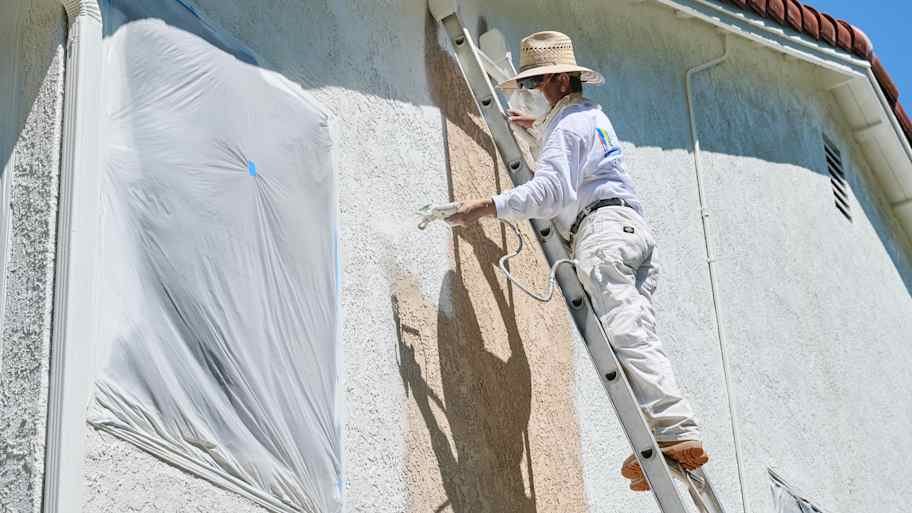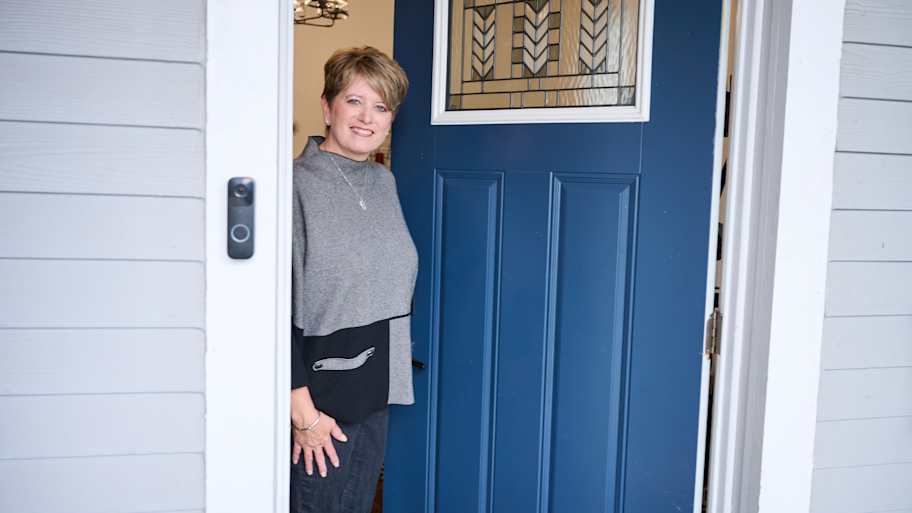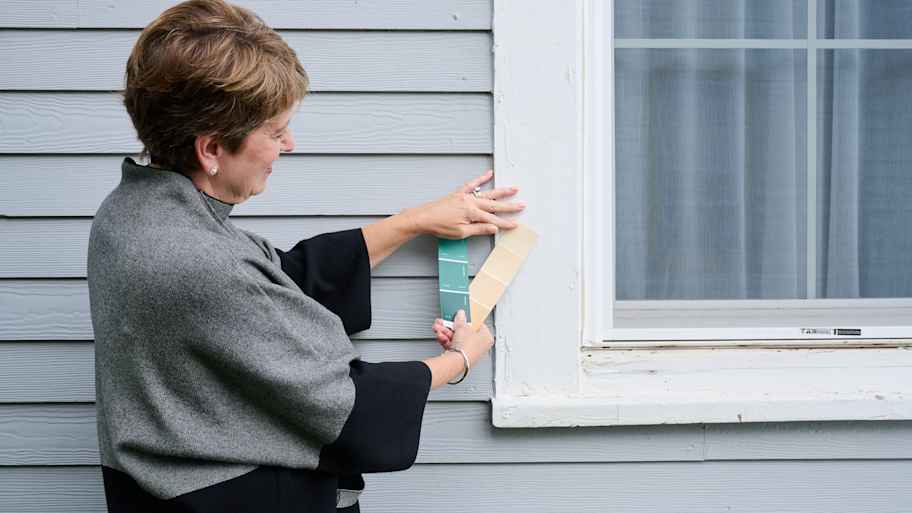The 11 Best Roof Colors for a White House
From soft grays to bold terra cottas, this guide will give you major inspiration


White houses don’t have to be boring. This classic color has major curb appeal as long as you get your roofing right, but the best roof color for a white house largely depends on the material. Deep neutrals tend to shine, but you don’t have to be afraid of color.
When you’re picking exterior house paint colors, keep in mind that latex acrylic paint typically performs the best. Again, certain materials have different requirements. Concrete roofing may benefit from an epoxy-based or elastomeric paint. Either way, it’s a good idea to consult a local exterior painter—they’ll know which type of paint works best for your roof.
1. Soft Gray

You can choose virtually any roof color for a white house (provided your homeowner’s association approves). Soft gray—a lighter shade with minimal contrast—can keep your home looking big and bright. Light-colored roofing also performs well in warm climates. It reflects the heat from the sun, saving you a bit of money on your air conditioning bill (though roofing material generally has a larger impact, particularly energy efficient roofing).
2. Slate Gray

If you’re looking for gray exterior paint with a bit more contrast, reach for slate gray. This cool-toned-to-neutral shade is shockingly versatile. It works as well on asphalt shingles as it does on metal roofing. It can also help your home achieve the look of natural stone without the high cost of a real slate roof.
3. Charcoal

Charcoal is the darkest gray you can get before you reach black. When used as a roof color for a white house, it creates an air of elegance and sophistication. It’s a classic pairing that provides a strong contrast, helping architectural features like dormers stand out.
Dark roofing also tends to last longer because it doesn’t fade as quickly as lighter colors. It does, however, absorb heat. If you live in a cold climate, this is a major pro. The more heat your roof absorbs, the less you’ll need to spend on heating. A dark-colored roof can also help melt snow more quickly.
4. Black

Black is one of the most classic exterior house paint colors—and for good reason. Like all dark shades, it absorbs heat, making it the ideal paint color for cold climates. A black roof can suit almost any color home. It also looks good on virtually any type of roofing material, from asphalt shingles to metal roofing.
Black is sort of the best of both worlds. It offers a stark contrast against white siding, so your home will stand out. At the same time, it isn’t bold enough to make your neighbors angry. Just proceed with caution if you live in a hot climate. Your air conditioner might have to work a little harder to keep things cool.
5. Slate Blue

Slate blue is one of the most popular blue exterior house paints. This shade has a slight pop of color—just a hint more blue than its cousin slate gray. Use it to add instant curb appeal to a coastal home, and evoking images of the ocean waves and salt spray.
Like all blues, slate blue is cool-toned. Because it’s subtle, it tends to have more versatility than other blues. Choose a darker shade—one that borders on a smokey navy—to contrast with your white siding.
6. Dark Taupe

Taupe is the perfect blend of brown and gray. This neutral shade can lean warm (with notes of red, pink, or yellow) or cool (with notes of green and blue). Warmer shades tend to give off a more welcoming, vintage vibe while cooler shades feel elegant and contemporary. Whatever the undertone, a dark taupe roof will contrast well against a white home.
7. Sandy Taupe

A sandy taupe roof doesn’t have the same level of elegance as dark taupe, but it makes up for it with comfort. This light shade is ideal for countryside cottages, cozy beach houses, and desert ranch-style homes. It’s particularly helpful in warm climates because it doesn’t absorb as much heat as a darker-colored roof.
8. Chocolate Brown

If your house is a warm-toned white, but you still want a roof with plenty of contrast, say hello to chocolate brown. Chocolate brown is an ideal shade for shingles, shakes, and clay (or imitation clay) tiles because it feels organic. It’s a classic shade whether your home is a tiny ranch or a modern mansion. In the same breath, proceed with caution when painting metal roofing brown because it can look out of place.
9. Terracotta

If you have a Spanish-Colonial style home, you’ll be hard-pressed to find a better shade for your roof than terracotta. White stucco with terracotta roof tiles is the hallmark of Spanish architecture, but this exterior paint color also works with shingle roofs and imitation clay tiles. It brings a warm burst of color that fits right into a tropical climate or alongside desert xeriscapes.
10. Smokey Green

When it comes to roof colors, earth tones are always a go-to. They look put together but blend into the natural landscape. Smokey green is no different. This color functions as a dramatic neutral, though you can find shades that lean warm or cool to suit your home’s exact tone of white.
Smokey green works on any type of home or roofing style—whether you’re painting a sleek metal roof on a modern house, a classic shingle roof on a colonial home, or a tile roof on a tropical farmhouse. It works best on homes shrouded in greenery (or at least a well-kept lawn).
11. Olive Green

Olive green is a bolder, warmer cousin to smokey green. This green exterior paint is unapologetic (so you may want to check with your homeowner’s association before diving in). Olive green provides a pop of color that adds interest and nods to 1970s nostalgia for a white house. It goes particularly well with tile and metal roofing—especially if your home has quirky architecture (think a ‘70s-style A-frame cabin or Victorian home).
Tip: If you choose a bold accent color for your roof, you may also want to work it into your deck trim. The cost to paint a deck is usually $2 to $5 per square foot, and your contractor can paint it at the same time they paint your roof.





- How to Choose the Best Color for Your Metal Roof
- What Color to Paint a House With a Green Roof
- How to Choose the Best Roof Shingle Color for Your Home
- The Best Color Choices for a House With a Brown Roof
- 12 Siding and Roof Color Combinations That Will Make Your Home the Talk of the Town
- How to Pick the Best Roof Color for Your Home
- 6 Dazzling Exterior House Paint Colors That Will Transform Your Home
- 6 Benefits of Energy-Efficient Roofs
- 13 Types of Roofing Materials and How to Choose the Right One
- 30 Common Roofing Mistakes You Need to Know















